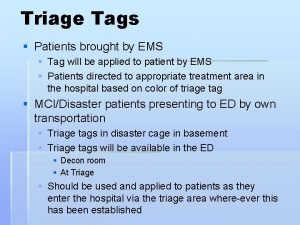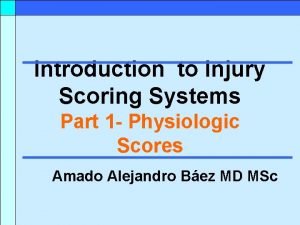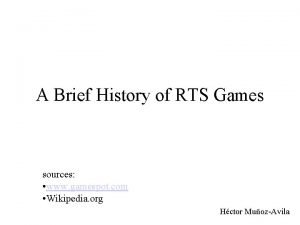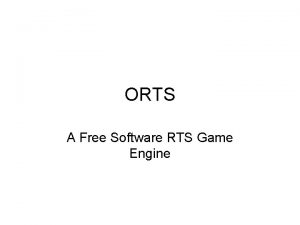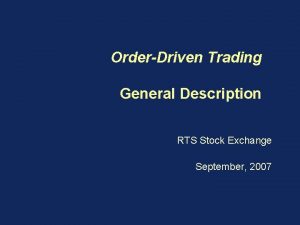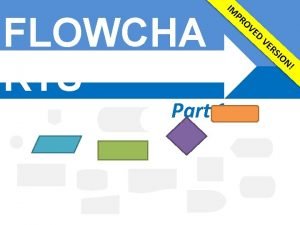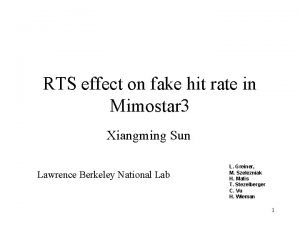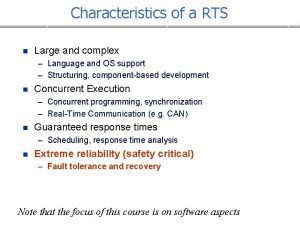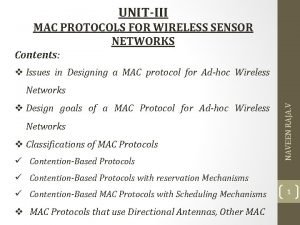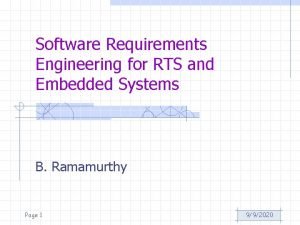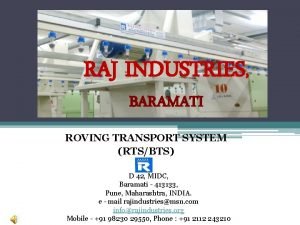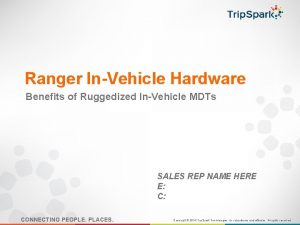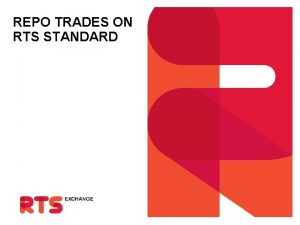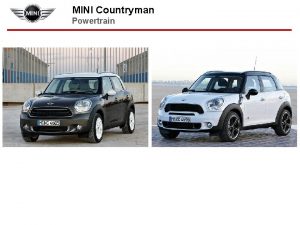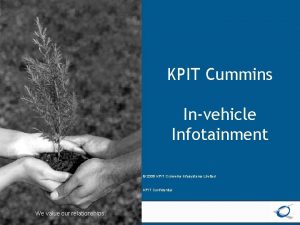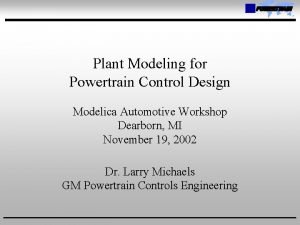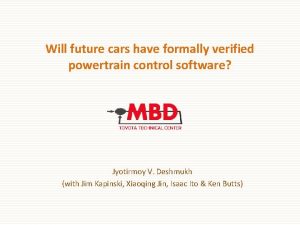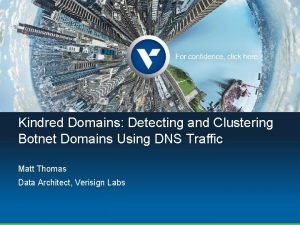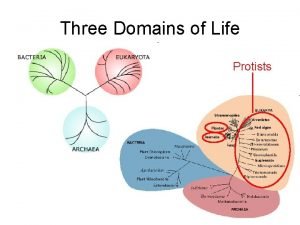RTS Meeting January 2008 InVehicle Domains Powertrain Control













- Slides: 13

RTS Meeting January 2008 In-Vehicle Domains • Powertrain: – Control of engine and transmission – Several complex control, high computing complexity – Multitasking and strict timing constraints – Frequent data exchanges b/w chassis and body – Requires fault tolerance, predictability and large bandwidth

• Chassis: – Control of suspension, braking and steering (Active safety) – Closed loop and advanced control systems (similar to Powertrain) – ABS, ESP, ASC (Automatic Stability Control), 4 WD (4 Wheel Drive), EPS (Electronic Power Steering), active suspension, ASR (Anti Slip Regulation), ACC (Adaptive Cruise Control) – Similar timing req. but more safety related – X-by-wire applications (steer-by-wire, brake-by-wire, drive-by-wire) – Requires fault tolerance, predictability, large bandwidth and flexibility to some extent – Towards time-triggered approaches • Why? – Dependability (reliability + predictability) – Composability

• Body: – Dashboards, wipers, lights, doors, windows, climate control etc. – Comfort functions that necessitate many exchange information – Not all nodes require a large bandwidth – LIN and TTP/A mainly used (up to 20 kbps) – for nodes that require large bandwidth and instant response CAN-B (low speed CAN up to 125 kbps)

• Safety: – Active Safety: ABS, Vehicle Dynamics Control (VDC) and cruise control – Passive Safety Systems: Airbags, Seat belt pretensioner – Requires fault tolerance, predictability, large bandwidth

• Telematics: – Car radio, CD, DVD, hands-free phones, in-vehicle navigation systems, rear seat entertainment – Multimedia data streams and Qo. S with preserving the integrity – Security of information is important – Requires large bandwidth, flexibility, security and predictability to some extent – MOST (Media Oriented System Transport), IDB-1394

• Relatively new protocols for in-vehicle networks – TTP/C: x-by-wire – TTCAN: chassis, active and passive safety systems and x-by-wire – Flex. Ray: x-by-wire

Possible Conferences I • IEEE Vehicular Technology Conference (VTC) • IEEE Real-Time Systems Symposium (RTSS) * • Conference on Real-Time and Network Systems (RTNS) • EUROMICRO Conference on Real-Time Systems (ECRTS) * • International Workshop on Parallel and Distributed Real-Time Systems (WPDRTS) • International Conference on Embedded and Real-Time Computing Systems and Applications (RTCSA) • International CAN Conference (ICC) *

Possible Conferences II • Workshop on Real-Time Systems (WTR) • Design, Automation & Test in Europe (DATE) * • IEEE International Conference on Vehicular Electronics and Safety (ICVES) • European Congress Embedded Real-Time Software (ERTS) • International Conference on Distributed Computing Systems (ICDCS) • Automotive Electronics Conference

• Main Areas of Interest – – – Comparison of time-triggered and event-triggered concepts Comparison of different in-vehicle communication protocols Application based comparison Protocol specifications (academic protocols) and timing analysis Scheduling applied on protocols (such as CAN, TTCAN and Flex. Ray) – Using relatively newer protocols for in-vehicle applications: TTP/C, Flex. Ray, TTCAN – Improvements on protocols • Performance improvement (i. e. bus access optimization) • Fault tolerance mechanisms’ improvement for more dependability (fault detection, fault and error modeling and correction) • MW improvements

INITIAL RESEARCH QUESTIONS • Integration, coherence and interoperability of different in-vehicle networks in a car • Flex. Ray Network • Reservation based approaches for hybrid communication networks 17. 12. 2008

INITIAL RESEARCH QUESTIONS • Integration, coherence and interoperability of different in-vehicle networks in a car – Middleware (Communication Layer) • What are the functions? – Hiding the distribution and the heterogeneity of the system – Providing high level services (i. e. fault tolerance and frame packing) – Improving Qo. S • OSEK/VDX, OSEK/VDX FTCom and Volcano • OSEK/VDX implementation language and operating system (real-time application development)

INITIAL RESEARCH QUESTIONS • Flex. Ray Network – Scheduler Design • • Schedulability and time analysis Bus access optimization (min. response time) Frame packing? Optimization wrt. different performance metrics? – Middleware for Flex. Ray • Current ones for Flex. Ray? • Additional fault tolerant mechanisms

INITIAL RESEARCH QUESTIONS • Reservation based approaches for hybrid communication networks – Improvements for FTT-CAN and Server-CAN – Fault tolerance mechanisms – How to implement providing integrity?


